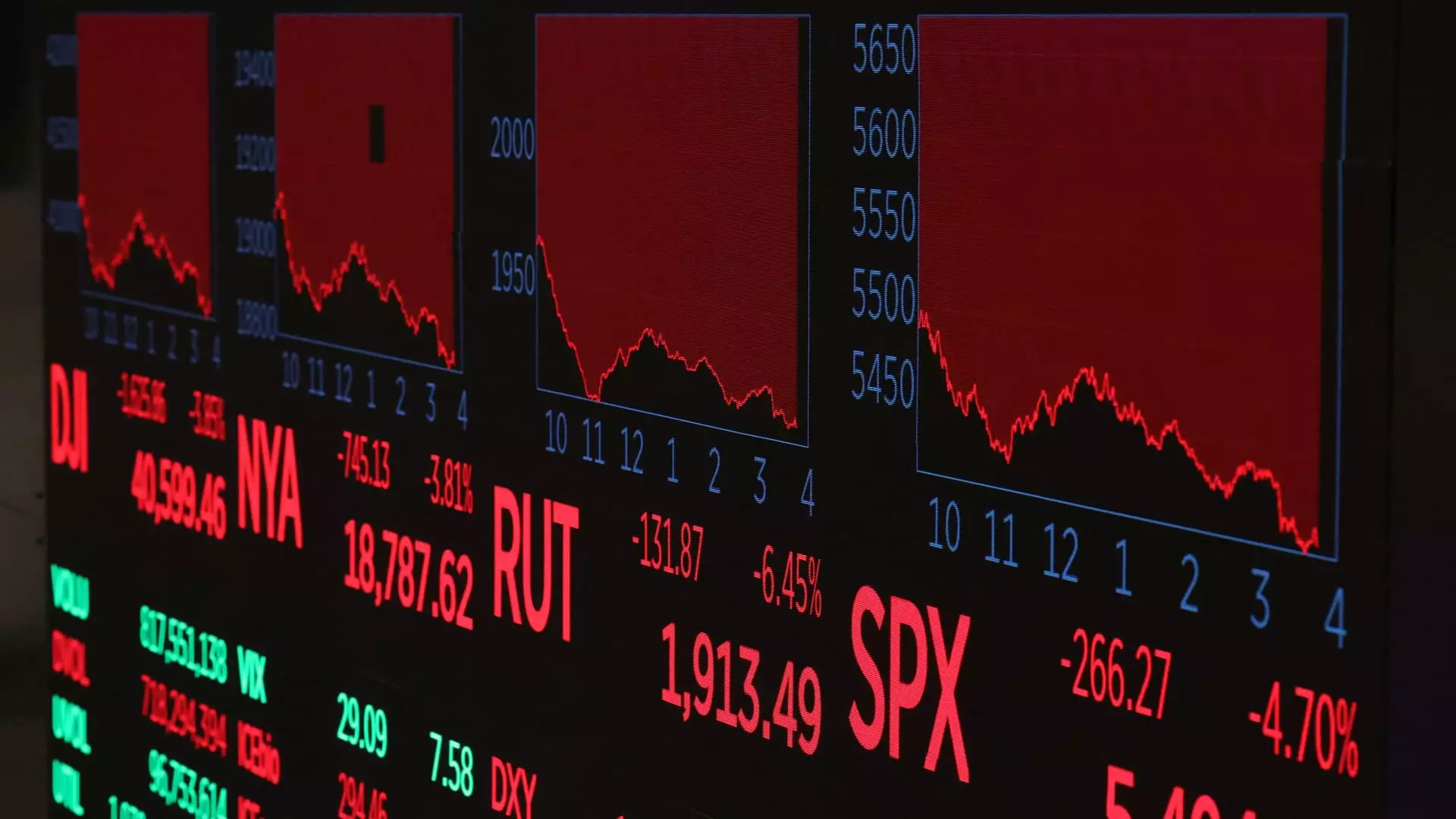In the unpredictable landscape of the stock market, where political decisions can send ripples of volatility across investor sentiment, retail investors have emerged as a surprisingly resilient force. While Wall Street appears locked in a state of anxiety—sweating over the latest tariff announcements and the looming threat of recession—individual traders are quite literally dancing to the beat of their own drum. This is particularly embodied by the likes of Rachel Hazit, who, instead of shrieking in horror during a market nosedive, chose to channel her anxiety into action by purchasing equity ETFs.
What sets Hazit apart from the traditional investor mindset is her ability to view market declines not as grave societal failures but as golden opportunities. For her, a drop in the market is perceived as a “sale,” a perspective that could challenge the conventional wisdom often adopted by larger institutional investors, who would rather retreat during moments of uncertainty. Such a mindset reflects a shift in the narrative surrounding retail investment, highlighting that everyday investors are more than just passive participants in this game; they are strategic thinkers aiming for long-term gains.
The Retail Rush into Stocks
It’s compelling to note that the actions of retail investors such as Hazit run counter to broader market trends. As institutional investors fled the scene, seeking shelter from the storm, retail players flocked to platforms to pump billions into the market. According to data from Vanda Research, on just one day, retail investors contributed over $3 billion during a significant downturn. Such actions paint a picture of a growing class of individual investors who aren’t waiting for the signals from Wall Street; they are creating their own signals.
In stark contrast to the doom-and-gloom predictions from analysts who slashed their projections amid fears of a bear market, the retail community’s response has been characterized by fervor and optimism. Their strategy, known colloquially as “buying the dip,” isn’t simply about capitalizing on market misfortunes; it’s about redefining what financial resilience looks like.
Marketing Narratives and the Psychology of Investing
One must wonder: what drives this shift in investment behavior among the retail crowd? The actions of Hazit and her peers reflect more than just opportunism; they showcase a psychological resilience rooted in a newfound understanding of the markets. With increasing access to information, online trading platforms, and educational resources, retail investors have rapidly transformed from novices to self-proclaimed experts. Influencers and communities dedicated to helping individuals break into the stock market have amplified this transition, encouraging a sense of empowerment and active participation.
Yet, beneath this movement lies a complexity. While retail investors find reason for optimism, they are simultaneously navigating a landscape fraught with risks. The CBOE Volatility Index—often referred to as the “fear gauge”—has surged dramatically, revealing the very real anxieties that remain intertwined with the market’s machinations. Are these retail investors merely gambling in a casino, or are they daring to revolutionize the way we perceive market dynamics?
Long-Term Vision vs. Short-Term Gains
Another underlying factor in retail investment behavior is the clear divide between long-term strategists and short-term speculators. Investors like Namaan Mian demonstrate a profound understanding of investment philosophy; while many may feel pressure to react to every market shift, Mian’s approach is grounded in enduring principles of sustainability and patience. By anchoring his investments in broad market indexes, he distinguishes himself from the panic traders who may view every downturn as an insurmountable barrier.
This distinction becomes even more poignant when considering the context of Trump’s tariff policies and their potential fallout. While some retail investors buy with an eye on immediate upswings following positive news, others remain skeptical and prepare for long-term challenges. Hazit’s concern about how tariffs might impact her buying power depicts a grounded understanding of interconnected financial realities, contrasting sharply with the overly optimistic outlook some retail investors cling to in the face of tumult.
The Future of Retail Investment
As this evolving landscape continues to unfold, one can’t help but contemplate the future role of retail investors within it. Will their embedded optimism transform the traditional power dynamics in investment strategies, or are we witnessing a fleeting phase in which individual traders momentarily outshine institutional giants? The collective stance taken by retail investors will undoubtedly influence market sentiment, quality of decision-making, and overall portfolio management approaches.
Ultimately, retail investors are showing that they are not merely followers in the cacophony created by larger institutions. They possess agency and a fierce belief in their capacity to navigate through uncertain economic waters. Whether this trend leads to lasting change within financial markets remains to be seen, but one thing is clear: an awakening is underway, and it is disrupting the age-old paradigms of investment.

